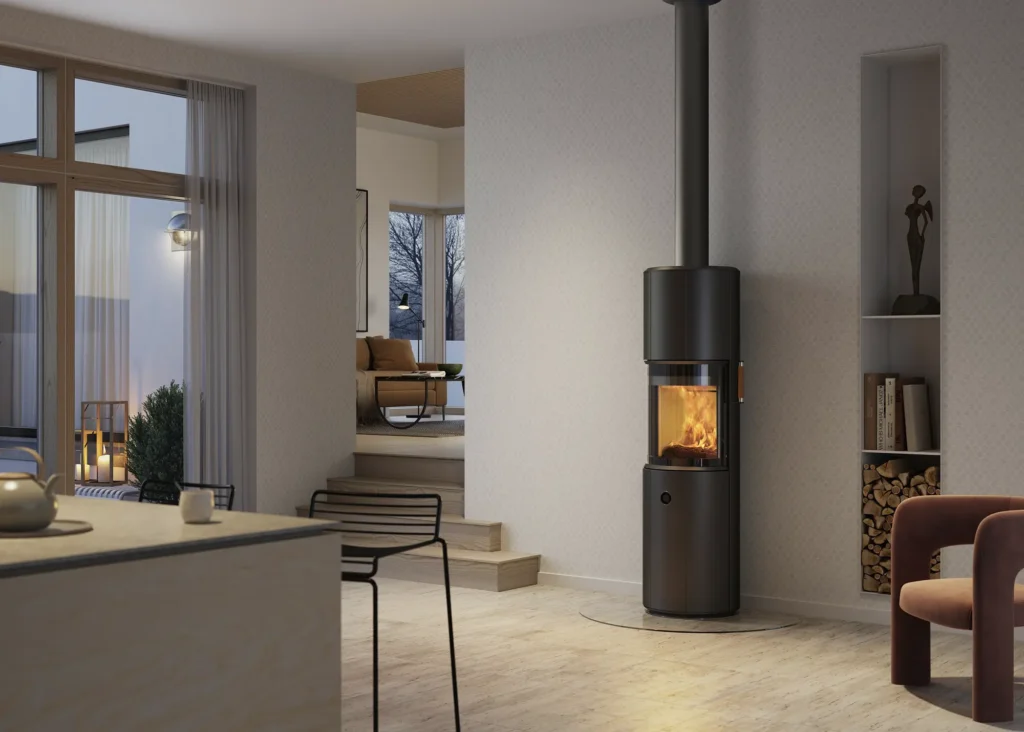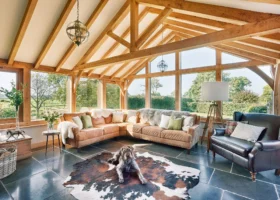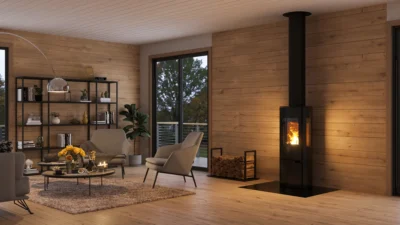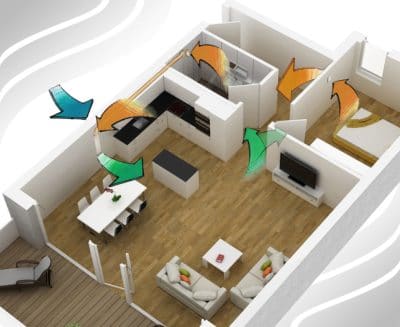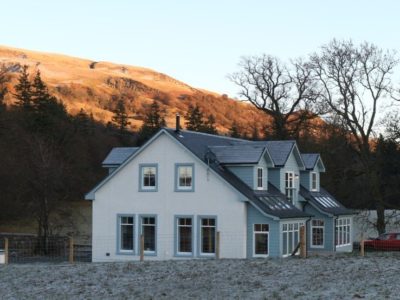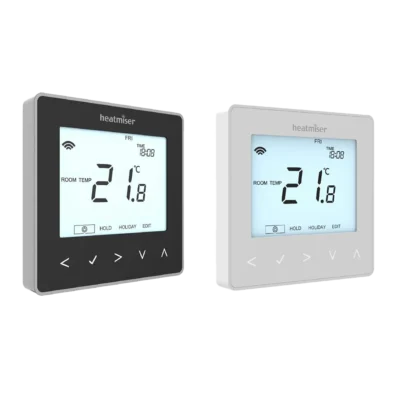Woodburning Stoves Complete Guide: How to Choose & Install Woodburners
There’s nothing that can quite match the cosy atmosphere a lit woodburning stove evokes in your home’s living space. “It’s difficult to be excited about coming home to a gas fire, a radiator or night storage heating on a wet winter’s evening,” says Jon Butterworth, director at Arada Stoves.
From contemporary inset stoves to traditional matt black fireboxes on four legs, there are plenty of stove styles and woodburners to choose from. But how efficient is this type of appliance? And, in the light of recent media criticism around the environmental impact of burning solid fuel, are woodburners really a sustainable choice for your home?
In this woodburning stoves guide, we take a closer look at the facts you need to know about modern woodburning appliances, so you feel equipped to decide whether it’s the right fit for your home and project.
Woodburning Stove Advantages
In addition to the aesthetic advantages, woodburning stoves are immune to interruptions from, say, a power cut (in the case of electric fires). Plus, in the face of rising utility bills, choosing to burn wood offers you some independence from fluctuations in the price of energy.
“In the past 18 months we’ve seen the stagnation of competition in the domestic energy market – but when you own a woodburner you can always shop around for the best prices and become independent of all that,” says Jon.
“Plus, if you’re fortunate enough to have access to forage-able wood, and also the means to season that wood, you can bypass that shopping around element.” Providing it’s sourced sustainably, wood is also a carbon neutral source of energy.
More Essential Advice: 12 Ways to Reduce Your Energy Bills & Create an Efficient Home
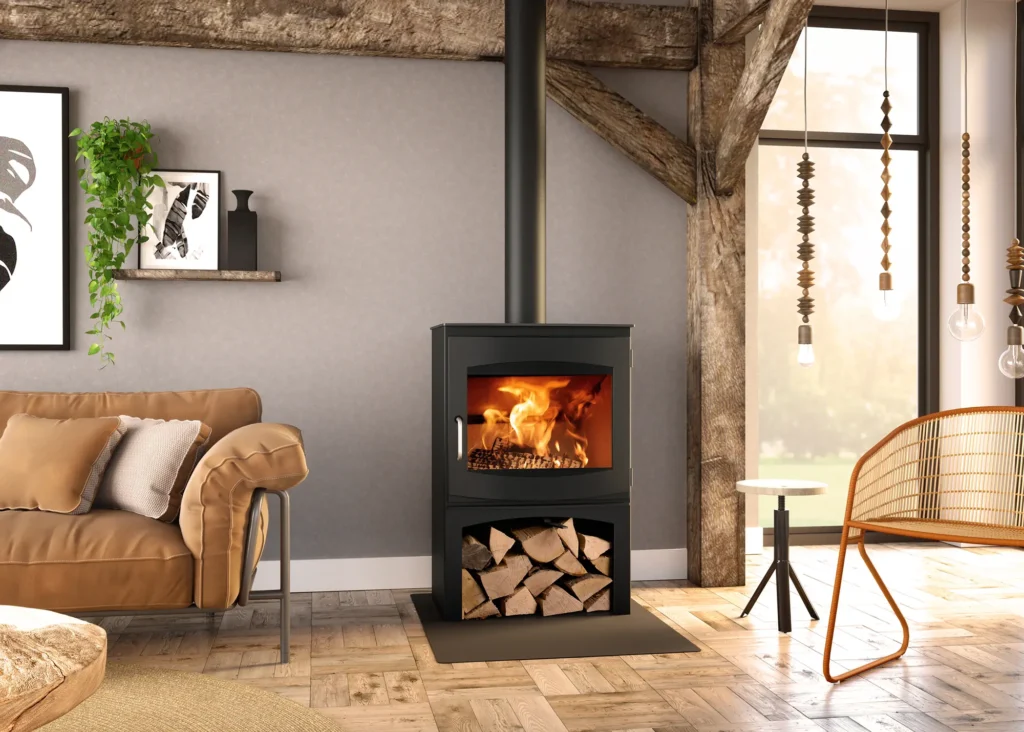
The Dik Geurts Ivar 10 H20, £4,325 from Dru Fires is a smart central heating stove offering all the aesthetic appeal of a traditional woodburner. The appliance heats the room directly, but also links to your home’s central heating and hot water system
According to Mike Coke, biomass products development manager at Stovax, stoves also provide a smart solution for localised heat, allowing homeowners to make the most of zonal heating. “This is the practice of warming individual rooms to the temperature you want, at that specific time,” he says.
“That means if you find yourself feeling a chill of an evening, instead of heating the whole house and wasting energy warming rooms not in use, you could save money by only heating the space you plan to occupy for that time.”
How to Choose & Install a Woodburning Stove
We’re focusing on woodburning stoves here, but they’re not your only option. And they don’t have to be room-only heaters: boiler stoves can be connected to a radiator-based central heating system and/or supply domestic hot water for taps and other outlets.
Depending on the model you choose, a boiler stove can power up to around 12 radiators, either acting as the main heat source or working alongside a conventional boiler.
Read More: Choosing Heating Systems: Radiators or Underfloor Heating?
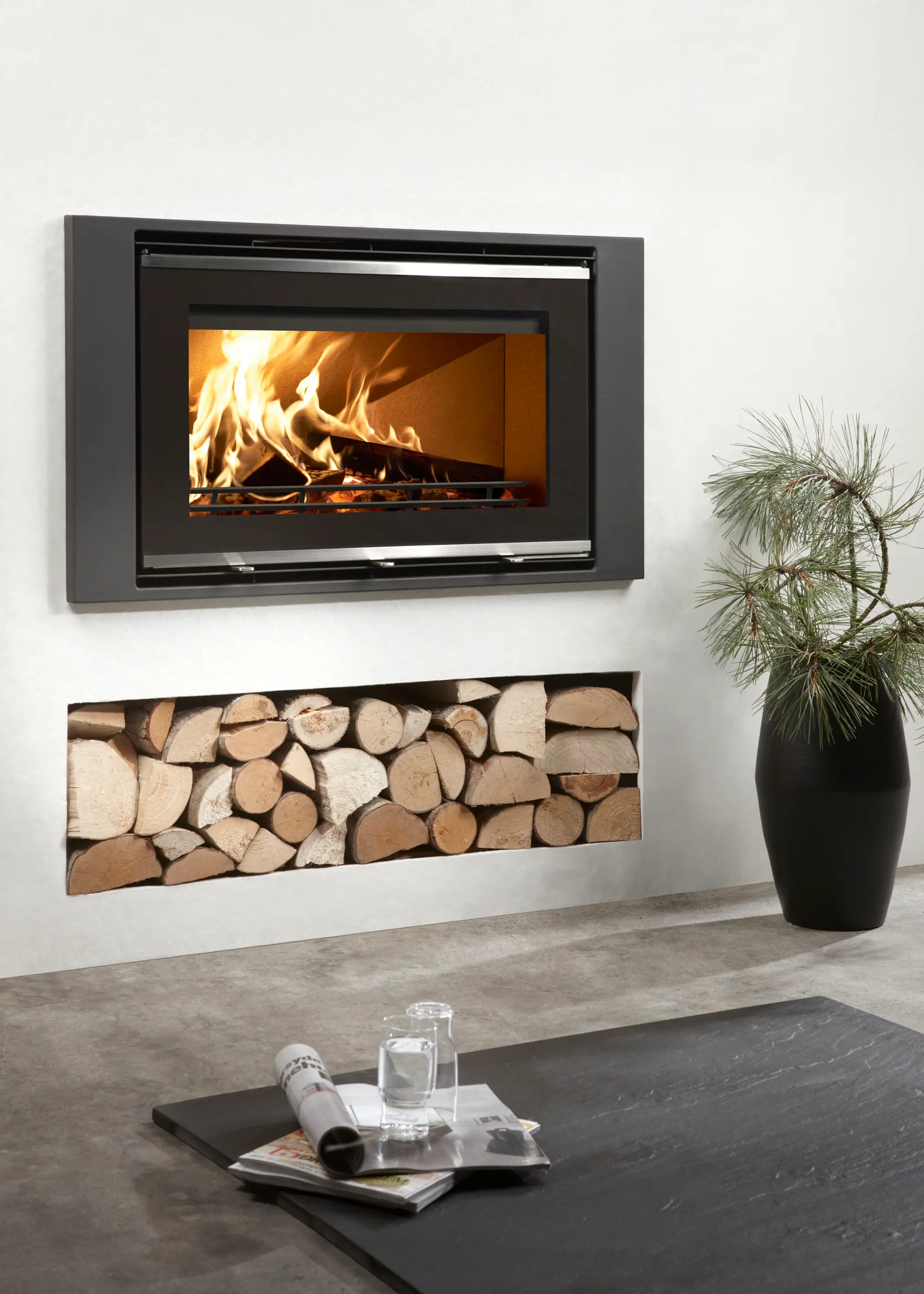
The space-saving design of an inset stove is ideal for smaller rooms where space is tight. Eurostove’s Westfire Uniq 32 starts at £3,250 and is a stylish solution for homeowners keen on the minimal aesthetic of an inset model rather than a freestanding design
When it comes to sizing up your appliance, you can get general idea of the heat output needed by calculating the size of the space in cubic metres (m3) and dividing this figure by 14. This will give you an approximation of the kilowatt (kW) output needed. However, bringing in a professional heating engineer to do the detailed sums for you is the best route to success when it comes to working exactly what your home and lifestyle requires.
A HETAS, OFTEC or similarly registered specialist will be able to conduct an in-depth survey of your house, to work out how and where it’s best to run the flue from the woodburner to the exterior of the property. “Woodburners require a solid fuel flue system and in some cases it can be difficult or expensive to install one if it isn’t there already,” says Peter Mintoft, managing director at Charlton & Jenrick. “Avoid complicated flue routings and use the top outlet of the stove wherever possible to make it easy to start and operate.”
The woodburning stove must sit on a suitable hearth and be located away from combustible materials such as plasterboard. Your manufacturer will have clear guidance on suitable distances for the selected product. Plus, you’ll need to factor in a space to store logs, and be able to dispose of a small amount of ash after every few days’ worth of burning.
CLOSER LOOK What should a self builder consider when planning their home?Mark Ryan from Jotul, shares his tips on incorporating cosy woodburning stoves into your home building project Good stove placement is vital. Don’t just tuck it away somewhere it will only give localised heating (unless that’s specifically what you’re looking for). Your flue system should also be mapped out in detail at the planning stage, much like your drainage or ventilation. Jotul‘s Scan 67 woodburning stove has an elegant, smooth finish an effortless slimline look, showcasing both angled edges with a self-closing magnetic door, 156 degrees of glass for maximum flame views and a choice of 4 colour handles Most issues arise from a lack of planning, often because people haven’t sought early-stage advice. If you bring in a supplier later on, you might find there are challenges with running a flue, which could end up limiting the locations you can place the stove. The same is true of the air supply (required for the combustion process). Although this might sound obvious, it’s still common for installers to be met with a property where access to bring the stove inside hasn’t been considered and newly placed windows and doors need to be removed. A new stove can weigh up to 150kg or more, so putting it in position can be a challenge, even at ground level. |
Maximising Your Woodburning Stove’s Efficiency
An efficient maintenance routine is essential for optimal woodburner performance. A solid fuel appliance requires an annual service where it is stripped and cleaned so excess ash can be removed.
It should also be checked for any parts that need replacing. Your chimney requires upkeep, too. “You need a clear passageway for the combustion gases to exit your home. If your solid fuel stove has not been used for a few months, it’s important to get your chimney swept. This will ensure that it is free from any obstructions,” says Mike.
“Soot, deposits and tar can build up over time, and this will reduce the draw. Ultimately, it will make the stove run less efficiently and might even put your home at risk of a chimney fire.”
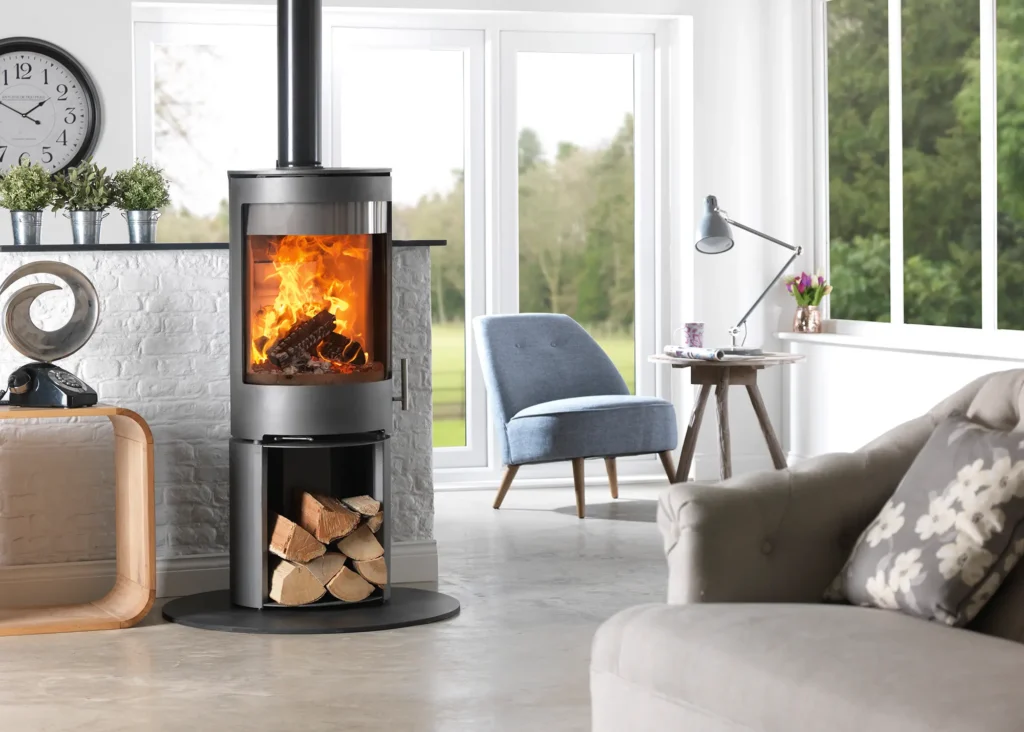
Capable of providing a high efficiency heat output of up to 84%, the Stovax Vogue Midi range is priced from £2,935. The Midline model, pictured here, comes with a stylish base that can be used to store logs
Burning wood that’s seasoned to the right moisture content is another key aspect of running your stove efficiently – only timber with a low moisture content should be used. “Seasoned logs should be allowed to dry for at least two years or more to achieve a moisture content between 14-20%, which can easily be checked with a moisture meter,” says Mike.
Good quality wood will provide a higher heat output than freshly felled timber, as well as producing lower smoke emissions and helping to avoid a build-up of tar in your flue. “When purchasing seasoned or kiln dried wood, look for the Woodsure ‘Ready to Burn’ certification,” says Mike.
Real-Life Inspiration: Eco Homes: 36 Sustainable Self Builds to Inspire Your Eco House
EXPERT VIEW Choosing a fuel type for your stoveMike Coke, biomass products manager at the Stovax Heating Group, shares his insight into choosing a stove for your home: Which stove is right for my property?There are two options for solid fuel stoves and fires – woodburners only burn logs, and multifuel appliances can burn logs or smokeless fuels. The atmosphere of real dancing flames and the wide variety of styling options available are what make solid fuel stoves and fires an appealing option. Look for stoves and fires that are approved for smoke control locations – even homes in the most urban areas may be able to use appliances that are exempt from the restrictions. The very latest gas stoves and fires boast fuel beds that are almost indistinguishable from real woodburning fires, along with designs that will suit both traditional and contemporary home styling. Offering high heating performance that is uncompromised by design, gas stoves and fires bring real flames at the touch of a button. If convenience and ease of installation is at the top of the list, electric stoves and fires make a great solution. Providing instant localised heat, and only requiring a standard three-pin plug socket, the designer electric fire creates a striking focal point while being installed almost anywhere in the home. Where in my home can I install a stove?A solid fuel stove or fire can be installed almost anywhere, as long as there is a flue and that the installation satisfies the requirements of the product, such as distance to combustibles. This may mean having a pre-fabricated flue system installed if you do not have a chimney already. A conventional flue gas fire can be fitted to an existing fireplace and chimney. Alternatively, a fireplace can be constructed with a metal prefabricated flue system. There are restrictions for installing conventional flue gas fires in bedrooms or bathrooms, and they should be located where accidental contact is unlikely. The great thing about an electric fire is that it does not require a flue, meaning it can be installed pretty much whether you want. Some can even be just hung on a wall, or placed in a corner! |
Do Woodburners Raise Any Environmental Concerns?
In recent years there’s been some press around the potential negative impact of woodburning stoves on air quality, with some sources saying the government’s Ecodesign standards, introduced in January 2022 to ensure products burn more efficiently, don’t go far enough.
“The new standards legislate for five criteria; lower carbon monoxide, particulates, dust and organic gaseous compounds, and greater efficiency,” says Chris Baines, managing director at Eurostove. “The process of improving standards is ongoing, much as it is in the car or water pollution industries. Ecodesign 2022 is part of that process and will be improved on in years to come.”
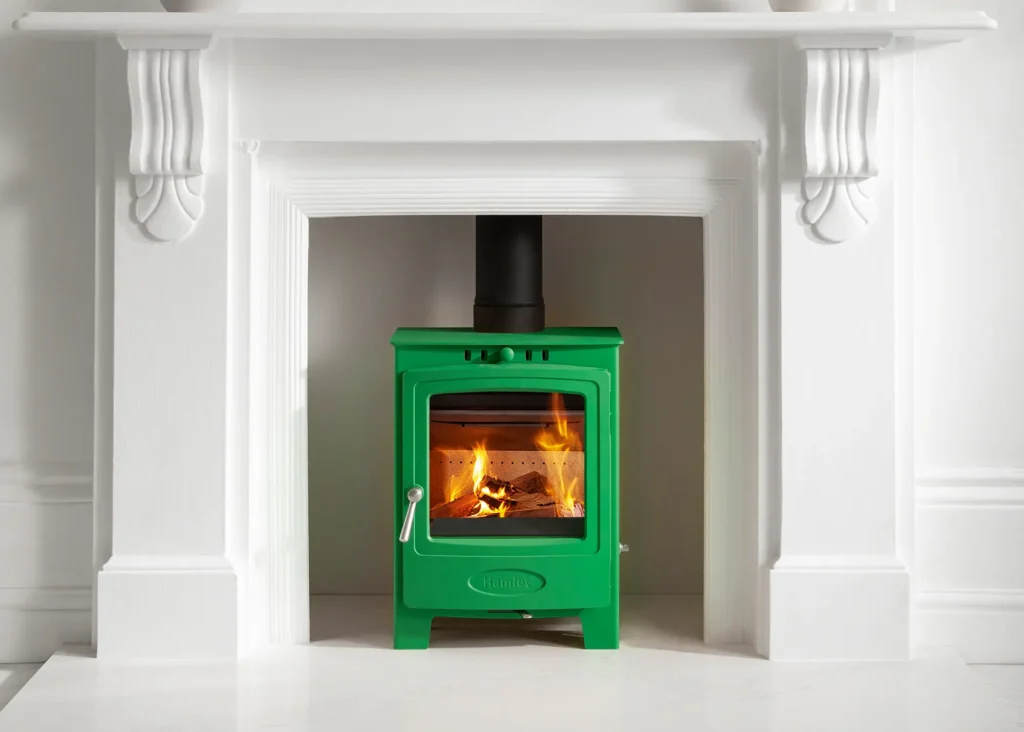
Arada’s vivid Peapod green colourway offers an ideal solution if you’re looking to introduce a splash of vibrance. The company’s Bold collection also offers wow-factor stoves in shades of pink, magenta, blue and yellow
Appliances tested to current Ecodesign standards produce up to 80% lower emissions than old stoves and are 90% better than an open fire. One of the main focuses of the criteria is the reduction of PM2.5 particulates – look for the clearSkies symbol, which has a rating system that indicates if a stove’s efficiency and reduced emissions level meets or outperforms the criteria laid out by Ecodesign standards.
“Government statistics illustrate the true contribution of Ecodesign stoves within national PM2.5 emissions, which is around 2.5%,” says Peter. “Cremation, fireworks and smoking all create more PM2.5 per annum than Ecodesign stoves.”
In addition to what the industry is doing to improve the environmental credentials of woodburners, homeowners can also play an important role in minimising emissions by burning only seasoned wood. Poor quality timber has a high moisture content, leading to poor combustion and the production of harmful emissions.
“Use the best Ecodesign stove you can afford with high quality seasoned logs and this will minimise the negative impact at the same time as providing fabulous looking, independent heat,” says Peter.
More Advice from Build It’s Experts: What Heating Should I Install In My Self Build House?
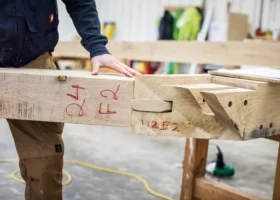






























































































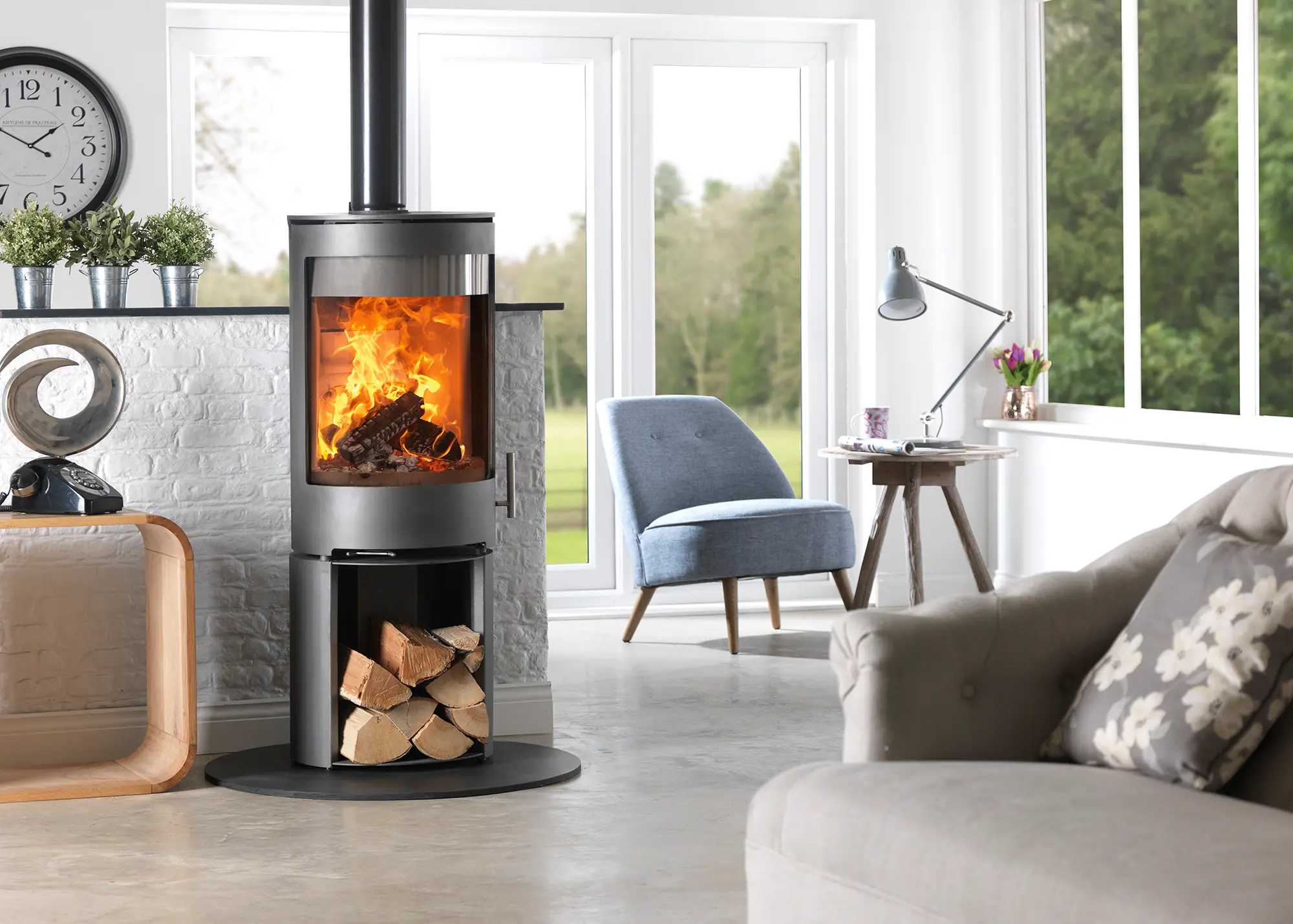
 Login/register to save Article for later
Login/register to save Article for later

